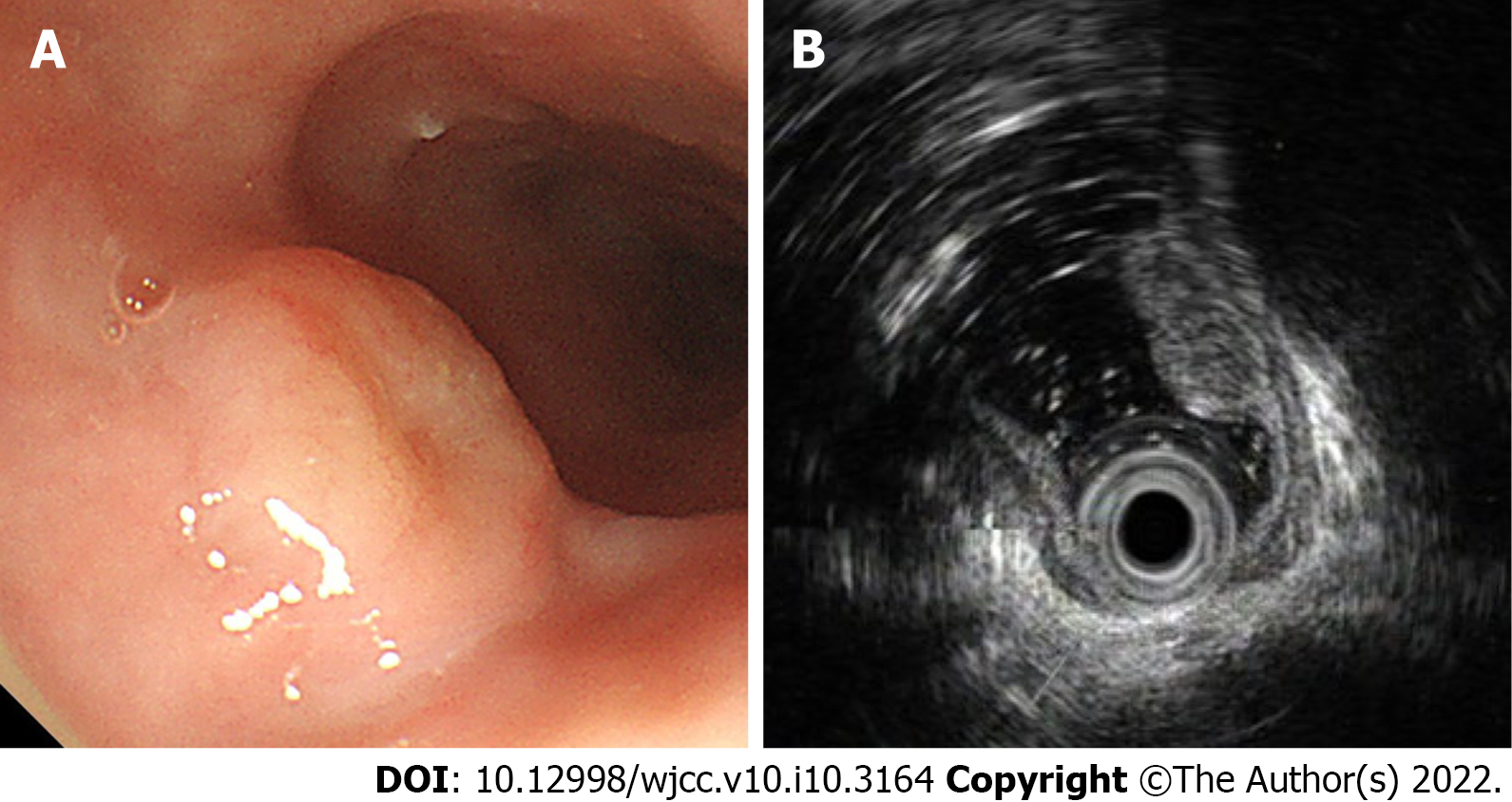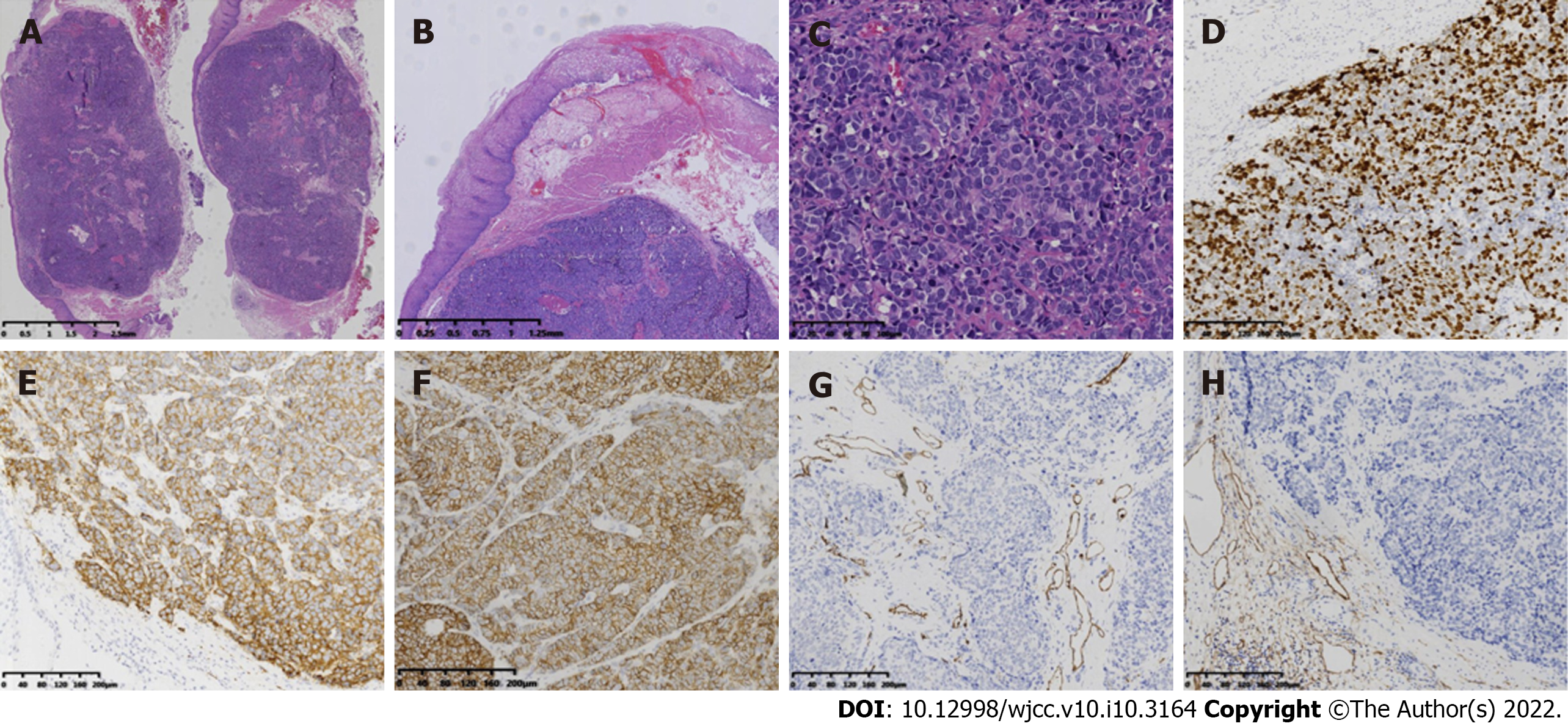Copyright
©The Author(s) 2022.
World J Clin Cases. Apr 6, 2022; 10(10): 3164-3169
Published online Apr 6, 2022. doi: 10.12998/wjcc.v10.i10.3164
Published online Apr 6, 2022. doi: 10.12998/wjcc.v10.i10.3164
Figure 1 Endoscopic images of the tumor.
A: Gastroscopy demonstrated a disc-shaped protruding lesion of about 18 mm × 18 mm in size in the upper esophagus; B: Endoscopic ultrasonography demonstrated that the bulged lesion was highly echoic and homogeneous, originating from the muscularis mucosa.
Figure 2 En bloc resection by endoscopic submucosal dissection.
A: Submucosal injection of indigo-carmine to create a submucosal lifting; B: The tumor was completely removed with no intraoperative perforation; C: Clip closure was carried out perfectly for the lesion; D: Completely resected specimen.
Figure 3 Histologic characteristics of the neuroendocrine carcinoma.
A: The gross specimen was a nodular tumor; B: Depth of invasion was classified as SM2 (submucosal invasion ≥ 200 µm); C: The poorly differentiated neoplasm comprising large cells with marked nuclear atypia, multifocal necrosis, and 20 mitotic figures per ten high-power fields; D: Ki-67 labeling index was 80%; E: Syn+; F: CD56+; G: CD31-; H: CD240-.
- Citation: Tang N, Feng Z. Endoscopic submucosal dissection combined with adjuvant chemotherapy for early-stage neuroendocrine carcinoma of the esophagus: A case report. World J Clin Cases 2022; 10(10): 3164-3169
- URL: https://www.wjgnet.com/2307-8960/full/v10/i10/3164.htm
- DOI: https://dx.doi.org/10.12998/wjcc.v10.i10.3164











